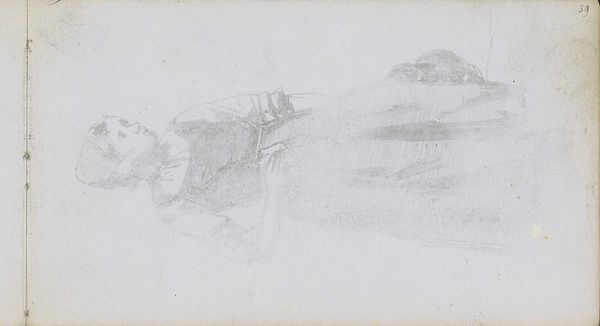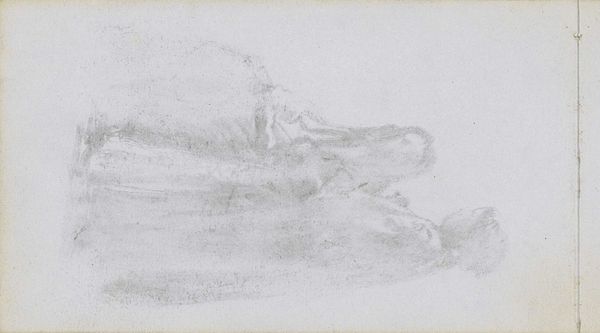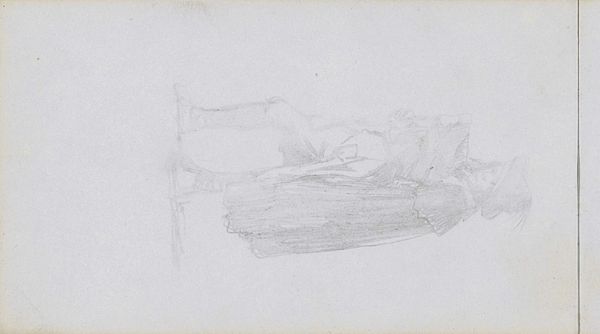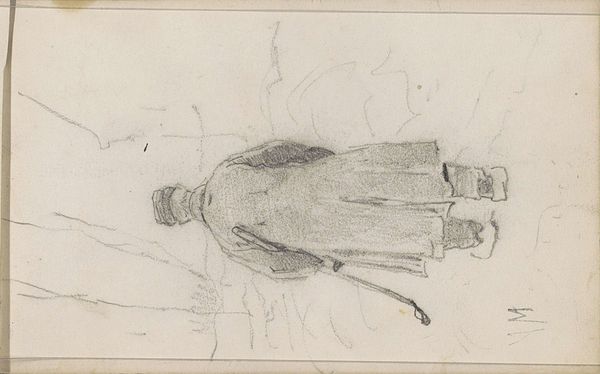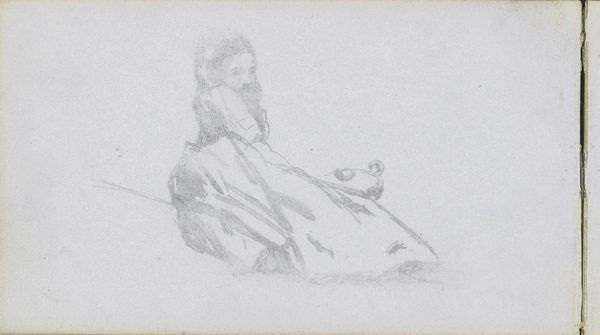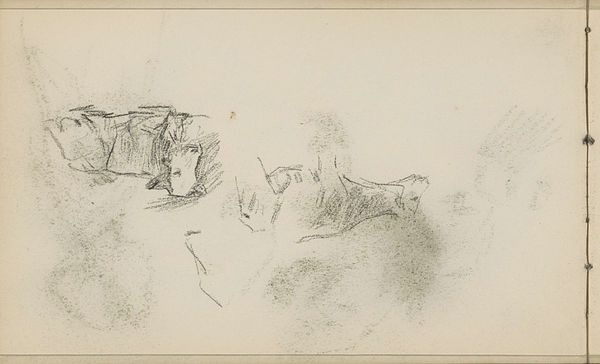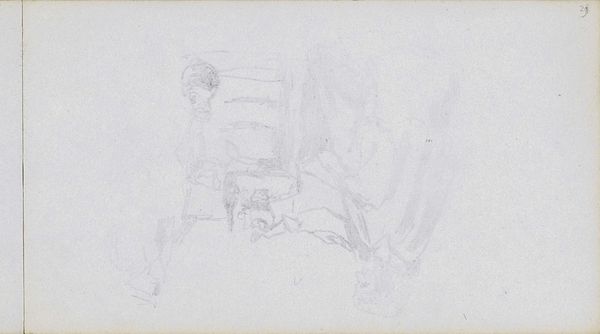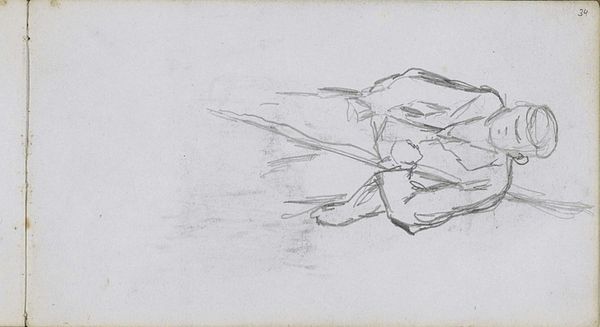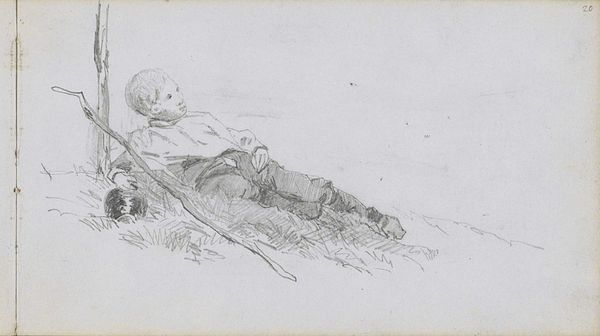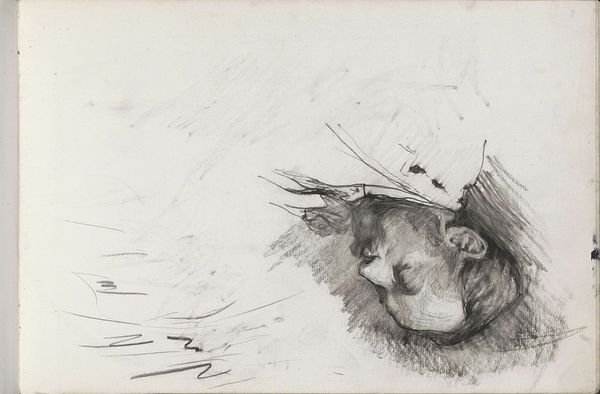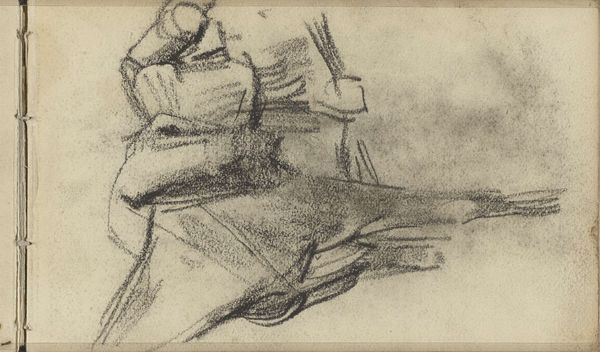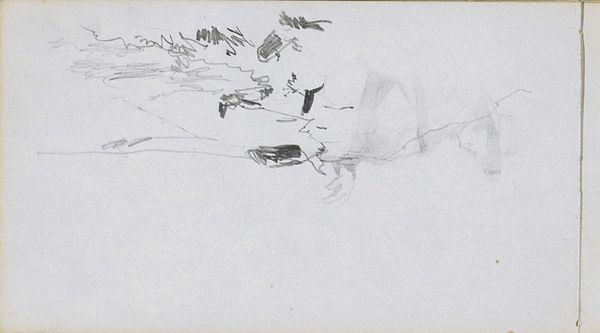
drawing, paper, pencil
#
portrait
#
pencil drawn
#
drawing
#
pencil sketch
#
paper
#
pencil drawing
#
pencil
#
pencil work
#
genre-painting
#
realism
Copyright: Rijks Museum: Open Domain
Curator: This drawing is entitled “Abklatsch van de tekening op pagina 8 recto” by Johan Hendrik Weissenbruch, made between 1834 and 1903. It's rendered in pencil on paper. Editor: My initial impression is one of hushed domesticity. The monochromatic palette and soft pencil strokes create a serene, almost melancholic atmosphere. Curator: Indeed. The composition, though seemingly simple, is carefully structured. Note how the figure, presumably a woman, is positioned off-center, lending a sense of candidness. The negative space on the left adds to the feeling of intimacy, drawing us into her world. Editor: I’m drawn to the tactile quality of the pencil work. The varied pressure and density create depth and shadow, defining the folds of her clothing and the objects before her. What’s the cultural significance of the cooking utensil on the table? Curator: Within the context of 19th-century genre painting, such items served as signifiers of everyday life, specifically feminine domesticity. They spoke to the values placed on home and family during a time of immense social and industrial change. It idealizes a certain traditional simplicity of labor. Editor: I see your point, but does idealization overshadow the economic realities and social injustices prevalent during that era? Doesn’t focusing solely on structure gloss over the lived experience of the working class? Curator: One might argue so. However, by analyzing the formal elements such as the balanced composition, the harmonious light, and the subdued color palette, we come closer to an appreciation of the artist's intentional use of space and lines. Editor: A vital approach! However, a crucial task is understanding how images like these affect and solidify concepts of gender, labor, and societal standing. Both the visual elements and the greater implications make these pieces relevant in many settings. Curator: Ultimately, examining the interplay between the formal structure and historical context unlocks a deeper, more comprehensive interpretation of this artwork. Editor: Exactly. By viewing art through these different lenses, we enrich our understanding of not just the artwork but also the complex interplay of art and society.
Comments
No comments
Be the first to comment and join the conversation on the ultimate creative platform.
